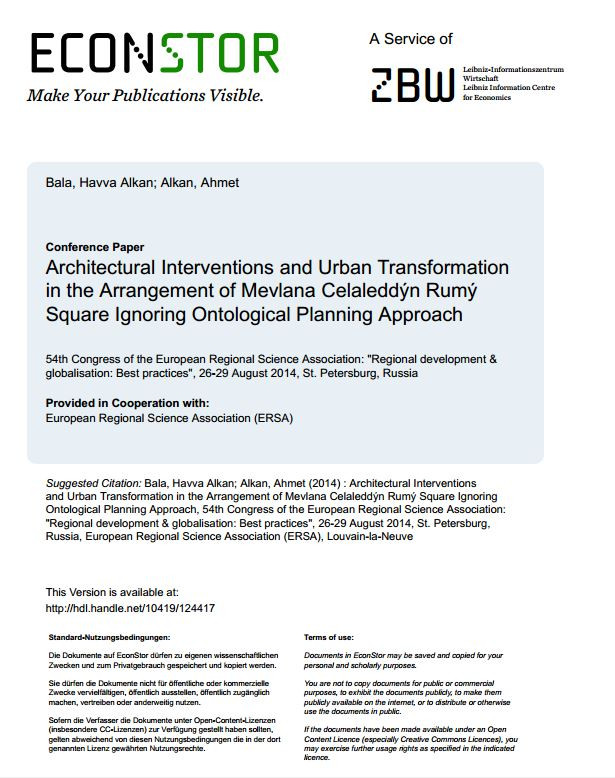
If urban design decisions are taken ignoring the historical value of buildings, cultural inputs and meaning of the space based on memories and experiences, the sense of place disappears like in Konya Mevlana Celaleddin Rumi Square. Konya was the capital of Anatolian Seljuk, and the Mevlana Celaleddin Tomb, which is the symbol of the city. The aim of this study is to try to understand the architectural interventions and urban transformation within Konya Mevlana Celaleddin Rumi Square that has the potential of producing creating general results. Ontological Planning approach is adding spirit to the space and also addition of the morphological energy of the space to urban planning. Ignoring ontological planning approach, all spatial decisions for making better will create new problems and will create worse.
Bala, Havva Alkan, and Ahmet Alkan. “Architectural Interventions and Urban Transformation in the Arrangement of Mevlana Celaleddýn Rumý Square Ignoring Ontological Planning Approach.”, in The 54th Congress of the European Regional Science Association: “Regional development & globalisation: Best practices”, St. Petersburg, Russia (2014).
I agree to the terms outlined below:
You agree to upload and assign Mosqpedia Database the rights to use the content worldwide and in perpetuity across all current and future media platforms. Mosqpedia Database may edit, copy, adapt and translate your contribution.
The content will be distributed under the Creative Commons Attribution-Deed – Attribution-NonCommercial-NoDerivatives 4.0 International – Creative Commons
All data will be stored in line with data protection regulations.